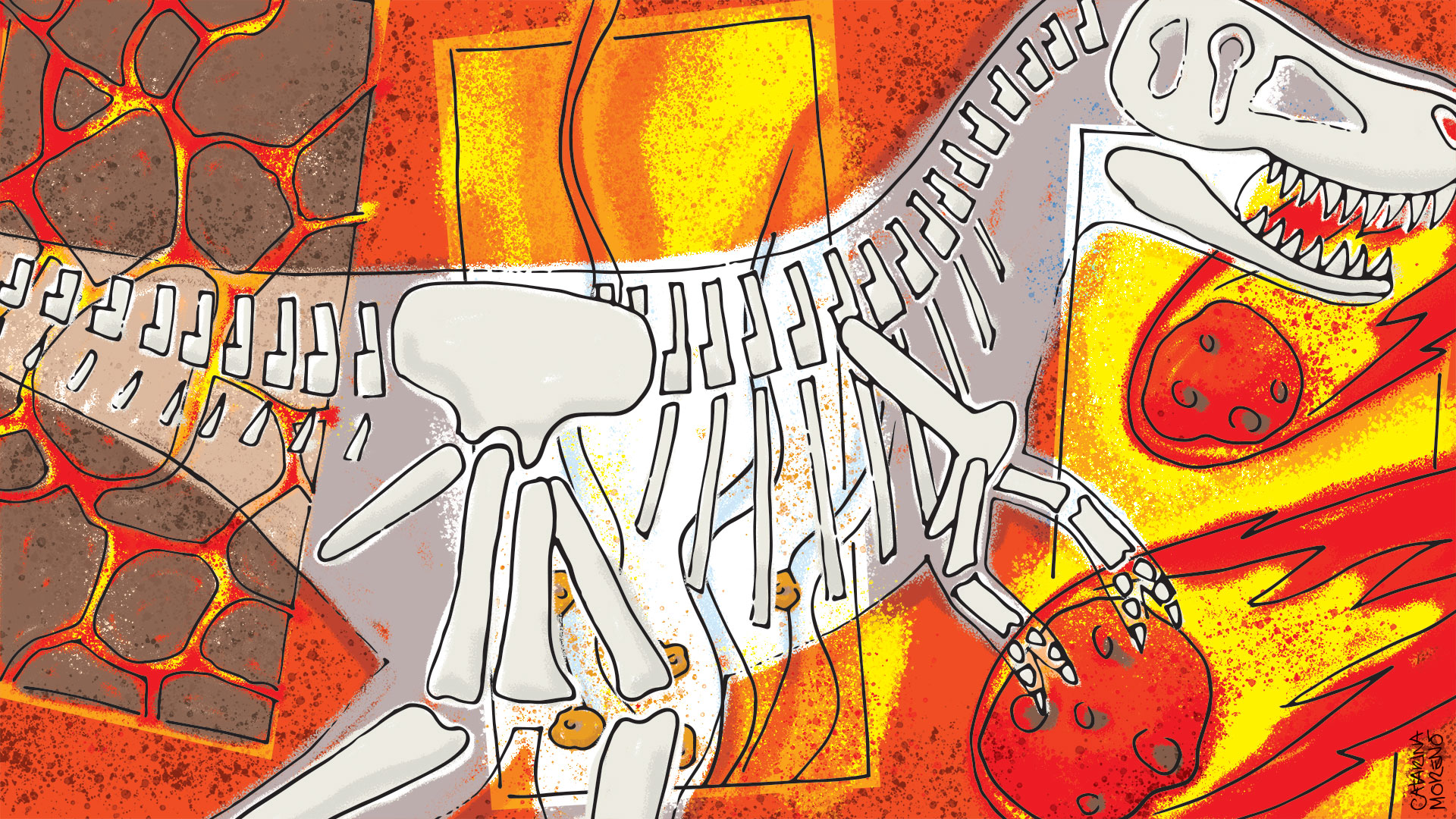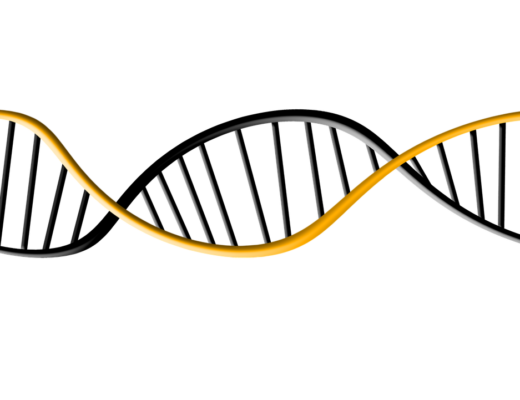Illustration by Catarina Moreno ([email protected])
The story goes that an asteroid impact wiped out dinosaurs, but in reality scientists aren’t so sure what drove dinosaurs to extinction around 66 million years ago, along with over two thirds of Earth’s species. This catastrophic mass extinction changed the history of our planet- it was the beginning of life as we know it. But what happened?
Paleontologists have been trying to piece this together for a long time, and it seems they might have finally found the answer. The problem was that a couple of global-scale natural disasters occurred within one million years of each other when dinosaurs disappeared: an asteroid impact in Central America, and massive volcanic eruptions in Asia known as the Deccan Traps. So which one eradicated over 70% of the species on the planet?
Asteroid impact vs volcanoes
Several clues point towards the asteroid impact hypothesis. An enormous 200 km-wide crater in the Yucatan peninsula in Mexico is a clear indication that there was a massive asteroid collision exactly around the time of the Cretaceous-Paleogene (K/Pg) mass extinction that killed off the dinosaurs– and this is confirmed by the huge amounts of asteroidal elements found in clay deposits around the world. Scientists estimate that an impact of this magnitude would have released a colossal amount of dust, sulfur, carbon dioxide and other compounds, causing extreme changes in the atmosphere, such as continuous darkness, acid rain, and lower global temperatures. This really sounds like dinosaur-killing conditions…
However, despite the evidence for the asteroid hypothesis, other asteroid impacts throughout Earth’s history didn’t appear to cause any other extinction events. And also, by looking at the rock layers and microscopic fossils at the Mexican crater location, paleontologists found that the asteroid impact preceded the demise of dinosaurs by several hundred thousand years. So some researchers suspect something else must have happened. There are some clues.
Volcanoes have been strongly implicated in other extinction events, and there is a good contender for the K/Pg mass extinction – the Deccan Traps. Around 66 million years ago, massive volcanic eruptions began in west-central India, with enormous lava flows spreading across the continent and into the deep sea, creating one of the largest volcanic features on Earth. These eruptions went on for about 300 thousand years and spewed hundreds of thousands of cubic km of lava, together with a lethal mix of gases- this is called “outgassing”.
Scientists believe outgassing cooled the atmosphere and eventually wiped out plant and animal life, but the precise timing of these volcanic eruptions remains unclear, so it’s hard to be sure whether they were the culprit behind dinosaurs’ disappearance.
The answer, probably.
In a new study, scientists from around the world joined efforts to put an end to this debate. They wanted to understand exactly what was the impact of volcanic outgassing on Earth’s temperature and the marine carbon cycle, which is an indicator of biological change. Pincelli Hull at Yale University (US) and lead author in the study says in a press release:
Volcanoes can drive mass extinctions because they release lots of gases, like sulfur and carbon dioxide, that can alter the climate an acidify the world. But recent work has focused on the timing of lava eruption rather than gas release.
Pre-mass extinction volcanism could have acted in concert with the asteroid impact to drive the extinction, but post-mass extinction eruptions may have delayed the recovery of biodiversity, prolonging the extinction event.
To figure this out, Hull and her colleagues used detailed ocean drilling data and global temperature records to make computer models that could predict different scenarios of what was going on at the time. In each scenario, they simulated specific timings and magnitudes of volcanic outgassing relative to the asteroid impact. For example, in one scenario (“leading” scenario) most of the outgassing occurred before the asteroid impact, and in another (“50/50” scenario), half of the volcanic gases were released before the impact and the other half after.
So which scenario best fit the temperature variations of that time?
The results show the “50/50” scenario wins- there was probably major volcanic outgassing just before and after the asteroid impact, but the only natural catastrophe coinciding directly with the K/Pg mass extinction was the collision itself. Nevertheless, the authors note that although the asteroid made most of the damage, the massive outgassing from the Deccan Traps likely played an important part in shaping biological communities after the extinction.
We may never know exactly what happened 66 million years ago, but this new study gives us a good a glimpse into one of the most life-changing events in Earth’s history. And we finally know what doomed dinosaurs to extinction- the asteroid did it.
References:

If you enjoyed reading this article you might also like to learn about this study showing what’s the best time of the day to exercise.




